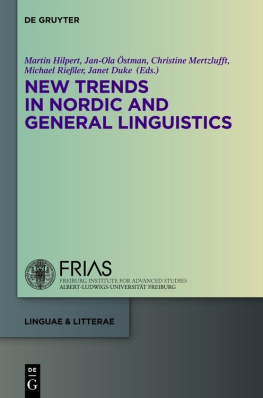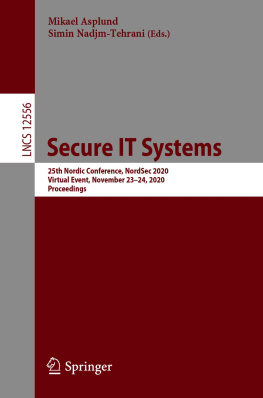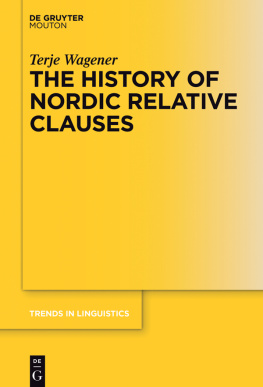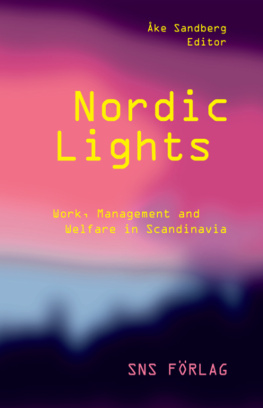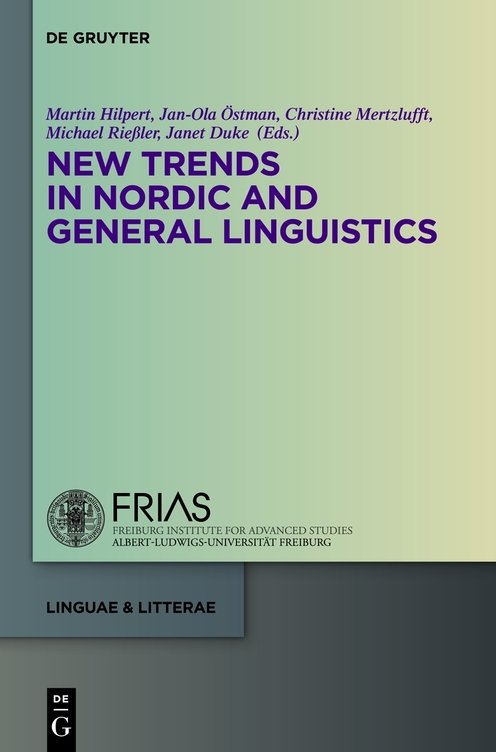Competing tendencies in Germanic pronominal and deictic systems: The most general principle will prevail
contact between related languages occurs (e.g. Scandinavian > Old English or Middle Low German > Scandinavian), complexity does not necessarily increase. The results, most of them due to L2 acquisition by adults, may be (A) simplification , e. g. a reduction to basic referential deictic functions in discourse, (B) increase of semantic transparency /iconicity or (C) disregard of equivalent forms , which obviously were considered superfluous by L2-learners, and preference of other forms with the same deictic function.
The respective instances to be discussed are: (A) Transfer and later integration of Scandinavian third person plural pronouns into the Old English personal pronominal system. These borrowings should, however, not be regarded as beneficial suppletion, establishing a maximum of contrast between the singular ( he/his/ him/hine , masc.) and the new third person masc. & fem plural forms ( e[a]i/eira/ e[a]im/ < ei[]r/ei[]r/e[]im , replacing older he/hira/him ). (B1) Obligatory enclitic [+definite] marking of definite NPs in bilingualism with Danish though all other Old Norse demonstrative pronouns on - merged with the other deictic h- forms ( etta > h etta; h ar there; h er here; cf. also the other definite article h in, h itt , enclitic -in, -i ). (C) Loss of the h -definite articles in Mainland Scandinavian in favour of the functionally equivalent forms beginning with d- ( den , det ; de , dem ), which has its causes both in inter-lingual functional identification and substantial phonetic equivalence to Middle Low German de the. In all these cases, simplification, transparency or disregard of equivalent forms prevailed.
1 Introduction
reflexive pronouns and finally the 3rd person pronouns. No definitions are provided as to why the personal pronouns of the first two persons (singular/plural) should be considered pronouns. Although it is common grammatical terminology to speak of personal deictic forms such as German ich / Swedish jag I and German/Swedish du you as pronouns, it should be noted that deictic terms for the 1st and 2nd person are in many respects quite unlike pronouns. They represent, among other things, semantically unspecified referential markers for the speaker(s) and the addressee(s) and do not refer back to any (syntactic) antecedent such as he , she or it/they .
Prokosch (1939: 266285), still one of the leading reference surveys in English, starts out with the 3rd person pronouns in three genders (cf. Latin is, ea, id her, she, it), then presents the anaphoric, relative, interrogative, indefinite and, finally, the personal pronouns (of the first and second person). This is precisely the reverse order, obviously based on predominantly syntactic criteria. The degree of co-reference decreases from the 3rd person pronouns, via relative and indefinite to the personal pronouns (1st and 2nd person).
Hirt (1932: 7085) proceeds in a similar way as Krahe and Meid (1969), but decomposes these pronouns of whatever kind into (a) stems and (b) inflexions, which paves the way for the so-called corresponding (or genitival) adjectives, better known as possessive pronouns. Then the gender-marked pronouns are dealt with (sc. the pronouns of the 3rd person, occurring as masculine, feminine and neuter in form), followed by the interrogative, indefinite, demonstrative pronouns (and their inflexions), concluding with the composed pronouns.
These three approaches clearly show that the category of pronouns is a mixture of rather divergent parts-of-speech with predominantly morphological/ inflectional and syntactic/anaphoric features. None of them is, however, defined in an explicit way by the previously mentioned criteria. All these pronouns are obviously regarded as a natural class or, at least, as inherited morphological categories that need not be defined or ordered according to certain perspicuous criteria. They seem to be pre-existing, pre-theoretical and are, therefore, non-questionable.
However, as is well-known due to efforts within structural linguistics during the last decades, pronouns represent a very heterogeneous linguistic category based on morphological, syntactic and some other not explicitly specified criteria, such as the genitive of possession (cf. the possessive pronouns such as my/ mine or your/yours ). As already pointed out, the pronouns of the first and second person are, syntactically speaking, by no means pronouns that refer ana- or cataphorically to any syntactic constituents but represent semantically unspecified role variables (Braunmller 1977: 119125) for the speaker/s ( I, we : a. I + you, b. I + he/they) or the addressee/s ( you ). The common denominator might have been some inflectional similarities or paradigmatic intersections with other pronouns of the third person (cf. German m ein- , d ein- , s ein- or Swedish m in , d in , s in / sitt my, yours, his). This mixture of divergent grammatical criteria and, as a consequence, the cross-classifications and intersections between morphology and syntax might have caused problems for learners, especially for foreign language learners, who have to find out the systematic and accidental differences between these related parts-of-speech and their overlapping functions. They have, for example, to discover whether or to what extent it is possible to use third person pronouns (German sie , Scandinavian de/dem they [ nom.]) and the referentially equivalent demonstrative pronouns (German die , Scandinavian de/dem these [ nom.]) in the same syntactic frames (cf. the use of which and that as relative pronouns in English; cf. also Diessel 1999: 120127). As the Scandinavian examples show, these forms might be formally identical. But why is that the case? Is this syncretism accidental or rather the result of a functionally motivated change?
In the following sections we will present an explanation for this kind of merger, based on observations from Germanic language history, language contact and language acquisition. At the end it should have become clear why the presentations in some historical grammars of Germanic (dialects) are so heterogeneous and inconsistent in their classifications or categorical definitions. L2-languages learners will turn out to be the key for a deeper understanding of functional equivalence between some pronominal categories and the ways to simplify or rather unify parts of the pronominal systems in the Germanic languages (see McWhorter 2007 for a broader survey).
2 Pronouns and language contact
borrowing (cf. Law 2009: 214218). But the Old English personal pronominal system seems to belong to one of these few exceptions since Old English has borrowed the third person plural pronouns from Ancient Nordic during the Viking era as it has been claimed by the ruling doctrine: Old English h(e); hira; him > Middle English e, e, ai; e/air; ai/em . However, the Mainland Scandinavian demonstrative pronoun systems seem to be affected by language contact as well. A homophonic relation to the Low German demonstrative pronouns has been established, e. g. Old Swedish n, , t; (r), (r), n/ [nom.sg.; nom.pl.] (cf. Bergman 1972: 5152), pronounced as: [n, e(:), t; e:(r), a:(r), :n/e:] Middle Low German d / d i(e), d at; d / d i(e) [sing.; plural]. The modern (Mainland) Scandinavian languages have taken over the borrowed obstruent from Low German, a phenomenon which, again, reflects a case of simplification in pronunciation from a (voiced) fricative to a (voiced) obstruent: d en, d et; d e, d em .

